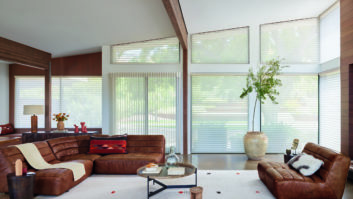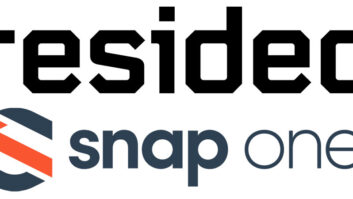Because many in our industry live in an Apple-centric world when it comes to mobile devices, it’s easy to ignore what the competition over at Google does with the various parts of their Android and Chrome ecosystems and the hardware products based on that software. While the Apple faithful wait for next week’s World Wide Developer’s Conference (WWDC), Google-holics gathered at the Moscone Center in San Francisco this past Thursday for the annual “Google I/O,” to get the latest news from their side of the fence.
While anything Apple does tends to get at least a few minutes on the nightly news shows and all over the popular press, Google seems to have a higher attention bar to pass. Despite that, you’ve probably still heard some bits and pieces, but no matter which OS or ecosystem you personally favor, you owe it to your clients to get the top stories and gauge the impact they will have on our market. That is precisely our goal here.

Google I/O is the annual Developer’s where the faithful are given the roadmap for the coming year’s new products and technologies in the Google/Android/Chrome world.
Android Watches
In the shadow of Apple, at least seven different models of Android-based watches are available, with more to come. The theme, according to David Singleton, Google’s director of Android Wear is “Glanceable, Actionable, and Effortless.” Indeed, in a presentation with some subtle jabs at the competition, the point was made that Android Wear products with the latest OS upgrade push are, indeed, always on. Further, mentions were also made that the watch works and has valuable functions even when the phone it is working with is not available.
Yes, there is clearly a cache in some circles to the Apple Watch, but for control and automation, the capabilities of Android Wear products make them worth considering. Given the availability of both products, I’d suggest a “bake-off” between the two. You might be surprised as to which might serve certain client applications better.
Project Jacquard
While the word “wearables” has now come to stand for things on your wrist, I’m a bit old fashioned and take the word literally to mean anything that you wear. Toward that end, one of the more interesting things revealed at Google I/O was a concept called “Project Jacquard.” Undoubtedly this project takes its name from the mechanical loom, first demonstrated in 1801 by its inventor Joseph Jacquard that simplified the process of manufacturing textiles with complex patterns. Google’s Jacquard is based on weaving conductive yarns into fabrics, such that you can touch or swipe a sleeve or pocket just as you would a device screen to control or active an object. Admittedly still a bit off in the distance, this is one of those things that has the potential to be a game changer as devices proliferate, and we all look to find new and easy ways to control them. Keep this one on your radar.
Brillo
Speaking of those IoT devices, while we wait to see what progress Apple is making toward a broader rollout of Home Kit, Google’s announcements at the I/O conference made it clear that its commitment to IoT extends well beyond Nest, DropCam, and other hardware and software acquisitions. In fact, the announcements last week were all software related, coming in two parts.
First is “Brillo,” which complements Android and Chrome as an underlying OS for IoT products. The origin of Brillo was explained as coming from the idea that the new OS is a scrubbed-down version of Android, designed to work in a small footprint with high security using Wi-Fi or Bluetooth Low Energy (BLE) as the communication pipe. Broad silicon support is said to assure wide adoption. Look for Brillo in Q3, this year.
Weave
The second part of Google’s plan is called “Weave,” which is a common communication layer that lets devices talk to each other and the cloud. Equally important, cross-platform APIs will, for example, let phones and wearable products talk to IoT devices, so that a setting established on a phone or tablet can talk to a device. On the flip side, the device can reach out to the phone for status information or warnings. In practical use, think of this as allowing the phone to control an oven, and when the roast is done, the oven can page and notify the phone.
The applications for this were clearly set out to be more than for the home, with industrial, commercial, and public service uses firmly in mind. Anyone wondering where Google is going with its basic-start acquisition of Nest will now have a much better idea of its direction.
HBO Now via Chromecast
While not much mention was made of Chromecast except that more than 17 million have been sold to date, it is worth noting that HBO Now has been released to Chromecast. Other deeper-level software tweaks will also be made, but any thoughts of a 4K version of Chromecast were put to rest with the absence of any new hardware at this time.
Android M
All of this is important, but the real heart of everything is, of course, Android. There, for those who poo-poo anything non-Apple, it should be noted that eight of 10 phones shipped worldwide last year were based on Android. Just as we expect news of the next iOS version at WWDC, Google did not disappoint with the introduction of its next OS, currently code named Android M.

Android M will add support for USB Type C connectors, a trend we expect to grow as connected products get hardware refresh updates.
The popular press will have brought you news of the major updates by now, but a few things are worth noting here. While you might not be able to convince clients to switch their personal phone from an iPhone to one that is Android based, some of the new features might make it worth considering an Android tablet for control, if not for a phone.
One key item is the Android M feature called “Doze” that will significantly increase battery life and double standby time. With tablets in home applications often vital to control, yet not near an outlet for charging, this is a valuable addition. Along with that, Android M will allow for use of USB Type C connectors. While this is something that is up to the hardware brands, the newer connector means that the plugs are bi-directional, so there is no more wondering if you have the proper side up, as is the case with current USB-Micro plugs. USB-C also will permit charge times that were said to be three-to-five-times faster. We don’t see it getting much use, but with Android M and USB-C, you can also do bi-directional charge, so that the phone or tablet can power another device.
I first saw USB-C in the new MacBook model, and this is another indication that this new plug configuration is beginning to gain traction. Are you prepared with all the USB-A to USB-C cables and other adaptors this will spawn? I strongly suggest that you begin to lay these into your stock!

USB-C in the new MacBook model.
While the new Android Pay system, also announced at I/O, may not be something you will use directly, it leads to something you might integrate into systems. Rather than use a physical button/sensor for fingerprint read, as Apple does, Android lets the screen itself function as the fingerprint reader. Even better, this will be compatible with devices running KitKat and many older phones, whereas Apple Pay is only for iPhone 6/6S models. Given access to the API and SDK for this, the ability to more easily integrate fingerprint authentication into Android-based systems is something worth exploring.
Google Cardboard
A final part of the news from Google I/O is in an area where you may not yet be involved. However, if trends and product developments hold true, this is one where you will have to be sooner than later: Virtual Reality, or VR. You may have heard of Oculus Rift, Samsung Morpheus, and other similar products from the likes of Sony, but have you paid any attention to Google Cardboard?

When Google Cardboard was first announced at last year’s Google I/O, some thought it was a joke.
When it was first announced at last year’s Google I/O, some thought it was a joke. Make no mistake about it: it is far from a joke, and Google is really serious about it. The latest version is simpler, more reliable, easier to unfold and assemble, and it will now accommodate phones with screens up to six inches. Oh, and there is now an SDK for iOS applications using Cardboard.
Look for this to be used in a wide range of applications from educational programs to games, and we suggest that this is something you might even want to create content for.
Given the modest cost of Cardboard viewers and the fact that they will soon be useful with both iOS and Android, why not have some appliques made with your company’s name, or even better, customize them for a client. “Great,” you may be saying, “but what is the content?”
Along with the iOS SDK and improved viewer, Google announced “Jump,” an open-camera geometry and image assembly system that will let you create VR content that could be a VR tour of past projects, or perhaps a virtual walk-though of a proposed home installation. How do you capture this content? Google has worked with GoPro to create a 16-camera rig that, while not exactly “hand-holdable,” will greatly reduce the cost of making VR content. Here is a great way to show how you can bring VR content to your clients at a modest cost. Think about partnering with local videographers to create the content and provision the infrastructure and the viewers. I can well imagine that it won’t be too far off before we see weddings and similar family, business, or local school content in VR. The first VR Bar Mitzvah video will happen sooner than later!

Google has worked with GoPro to create a 16-camera rig to reduce the cost of making VR content.
Time does not allow me to go into the deep detail of what took two days to unveil at I/O. However, use the notes above as a guide to what is specifically important to your business and the systems you deliver in the year ahead. For more details I recommend that you view the keynote yourself at http://bit.ly/1dFWeaA. Beyond that, there will be more as the many parts of all of this that are not available today move closer to introduction, either as SDKs or production versions.
As an example, no release date was given for the core product of Android M. In addition, when these OS versions reach the market, the letter designation gets a candy, baked good, or desert name. Google J became Jelly Bean, Google K became KitKat, last year’s Google L became Lollipop, and now we have Google M. Will it be Milky Way, Marshmallow? M&M? Mars Bar? Mounds? Milk Shake or Malted Milk? Mentos? Who knows, but whatever it turns out to be, the new software products from Google and the hardware with which they will work give all evidence of being tasty morsels.
They will certainly give another food—Apple—a run for the money and market share. Of course, just as we’ll see Microsoft’s Xbox One and Sony’s PS4 do battle later in the month at E3, we expect that there will be some interesting news on the next round of developments from Apple at the WWDC on June 8. We’ll be watching that closely and look for our recap right here at residentialsystems.com.
CEDIA Fellow Michael Heiss is a contributing editor to Residential Systems out of Sherman Oaks, CA.








